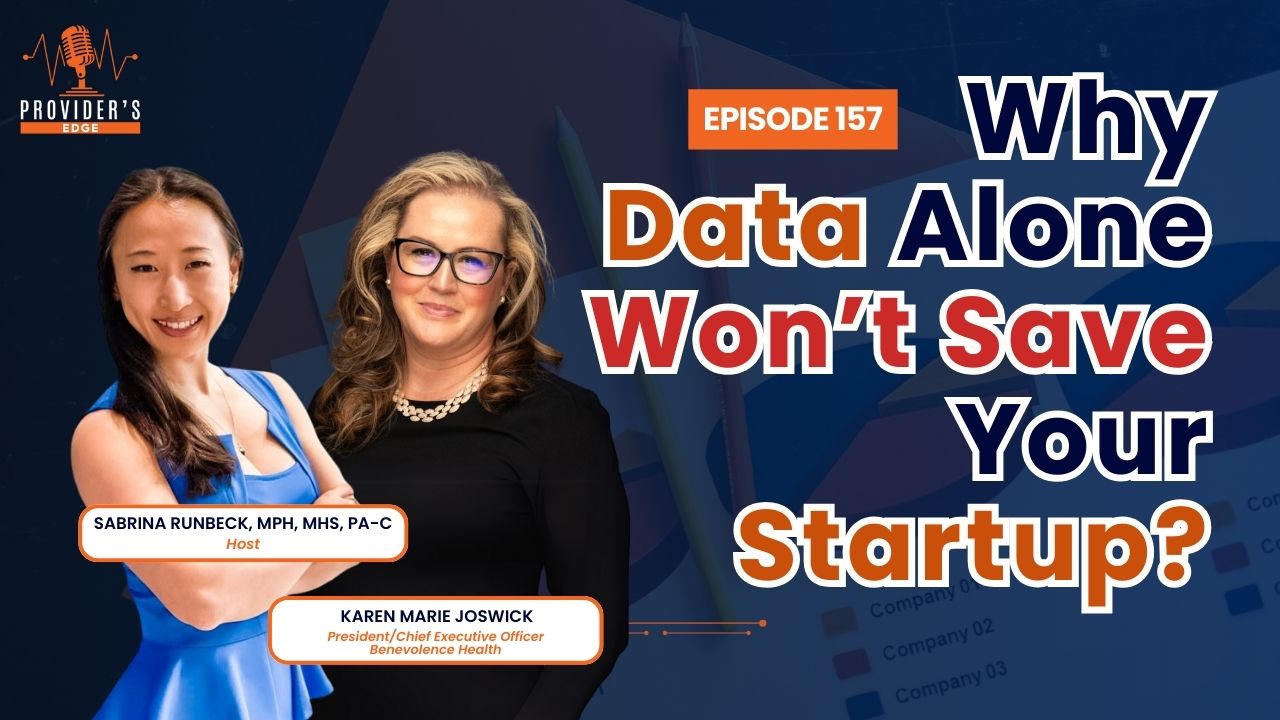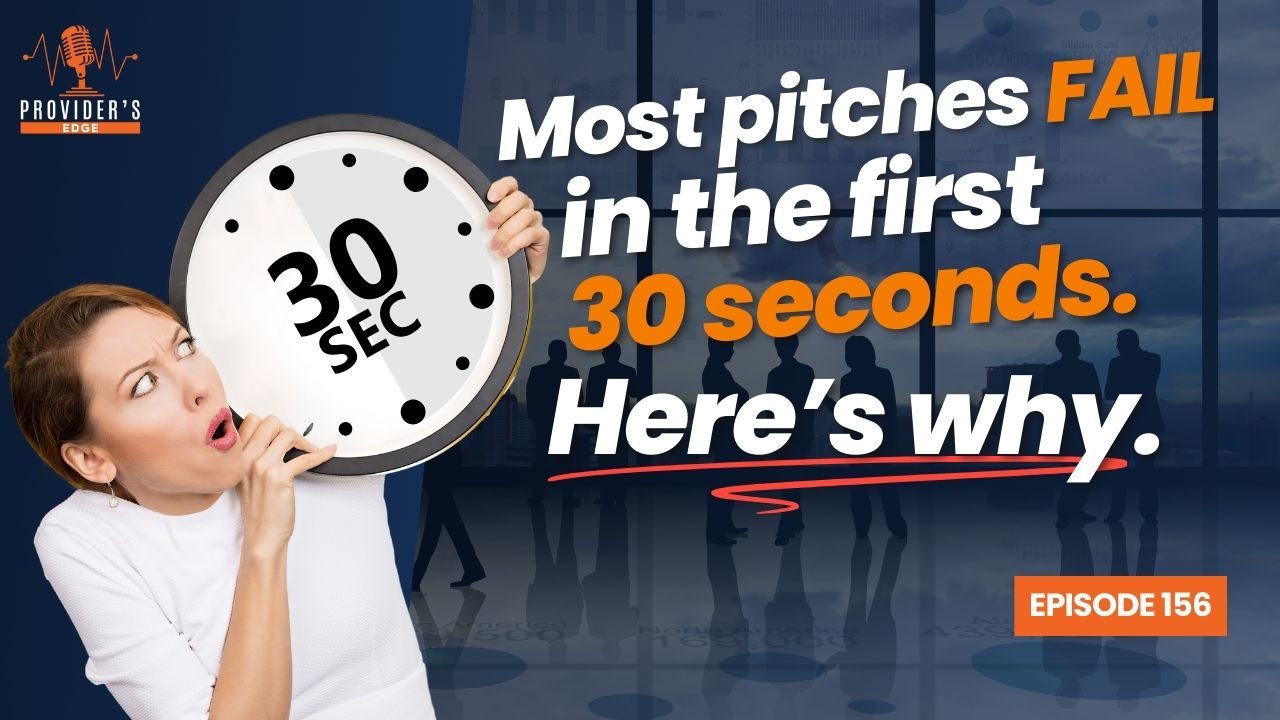
Reducing Nurse Burnout Through Robotics:
What Smart Investors Should Know
Half of all nurses leave within two years. And it’s not because they’re uncommitted—it’s because they’re overburdened. Documentation overload, administrative friction, and lack of support are costing the system billions—and creating a wide-open lane for HealthTech solutions that actually remove friction, not add it.
Let’s explore how vCare is doing just that—using point-of-care robotics to slash nurse burnout, increase retention, and open a scalable market that’s long been under-addressed.
Listen anywhere you get your podcastin' on.
Live Interview

The Untapped Market Behind Nurse Burnout
Nurse burnout isn’t just a workforce issue—it’s a business risk and a market signal. Facilities facing 30%+ turnover pay up to $88,000 per lost nurse. For health systems and long-term care providers, this results in operational instability, compliance risks, and lower patient satisfaction scores.
The deeper problem? Documentation and administrative overload.
According to multiple studies, nurses spend nearly 50% of their time on non-care tasks. That’s hours every shift spent typing, toggling between systems, or repeating verbal updates they already gave—all of which creates stress, risk, and inefficiency.
And it doesn't end at the bedside. The ripple effect touches HR departments, compliance officers, and clinical operations teams who must constantly adapt to high turnover and inconsistent staffing.
"Burnout isn’t just a people problem—it’s a product and process problem. If your solution adds to the overload, it’s part of the reason they’re walking away." — Sabrina Runbeck
Where Robotics Actually Fits
Investors in HealthTech have heard the pitch: "We reduce documentation time."
But most solutions add new interfaces, training requirements, and logins. They promise efficiency but deliver added complexity.
vCare breaks this cycle.
Their robotic solution—called CC (Care Companion)—was designed in collaboration with real nurses. It follows them during their shift, listens to verbal assessments, transcribes them with 95% accuracy, and integrates directly into existing EMRs like PointClickCare.
No extra clicking. No hardware carts. No after-hours notes.
Just care, recorded accurately, in real-time.
“We asked nurses what they needed before we wrote a single line of code.” — Jonathan McCoy, Founder of vCare
Rachel West, a nurse and early co-developer of CC, added:
"I’m able to be part of this from the beginning—to say, 'That’s not what we call for as nurses,' and actually help shape what will truly benefit the care team."
What Makes This Investable
Here are five strategic signals investors should take note of:
- Co-Design With End Users
- CC wasn’t built in isolation. It was co-created with bedside nurses.
- This shortens sales cycles and increases adoption velocity at the pilot stage.
- Quantified Impact
- Nurses report saving 3–5 hours per shift.
- Facilities are able to reallocate labor toward higher-value clinical interventions.
- Administrators can track improvements in documentation compliance and patient engagement.
- Clear Economic Moat
- CC is priced at $10K with a $1K/month subscription—one-third the price of competitors.
- Built-in integrations with top long-term care EMRs means switching costs are high once embedded.
- Retention as a KPI
- Facilities have said: "Don’t take it away—I need it to do my job."
- That’s retention by necessity, not incentive.
- Multi-Facility Demand
- Early pilots have already reached care networks with 10,000+ residents served.
- Pipeline growth is demand-led, not outbound heavy.
"When users ask you not to take your product away, that’s not just product-market fit—that’s emotional fit. That’s how you scale impact." — Sabrina Runbeck
Why This Isn’t Just Another Robotics Play
Robotics in healthcare often suffers from one of two problems:
- Designed for surgeons, not bedside workers
- Built for hospitals with budgets, not for SNFs or long-term care
vCare sidesteps both. They chose:
- Nurses as co-developers
- LTC facilities as entry market
- Workflow-first design, not feature-first
That’s why their robot is becoming essential, not optional.
“Founders often confuse complexity with innovation. But in clinical care, simplicity wins. The most adoptable tools are the ones that reduce the mental and physical clicks in someone’s day.” — Sabrina Runbeck
From an Investor Lens: The Right Time, Right Category
The total addressable market for LTC robotic workflow solutions is projected to exceed $5B+ globally over the next five years, especially with growing shortages in bedside care staff.
What investors should note is not just the market size—but the early traction:
- Real deployments
- Real nurse testimonials
- Real ROI per shift
This isn’t a science project. It’s a market-ready solution with operational proof.
And the business model is sticky by design. With deep EMR integration, care team alignment, and no steep learning curves, the barriers to churn are high. That’s the kind of structure that attracts enterprise partnerships.
Investors: What to Watch For
For those looking to expand into care delivery solutions:
- Watch the retention signal: If nurses say they can’t function without it, that’s sticky adoption.
- Track the integration footprint: EMR partnerships and seamless workflows reduce buyer resistance.
- Evaluate the enablement ROI: What CC does is not replace care—but enable more of it.
- Assess the implementation ramp: CC installs quickly, without needing major system overhauls.
- Consider expansion readiness: vCare’s framework can extend into acute care, home health, and more.
Conclusion: Healthcare Isn’t Just About Innovation. It’s About Fit.
vCare’s approach is a blueprint for what investable HealthTech looks like:
- Co-created, not top-down
- Workflow-embedded, not peripheral
- Priced for accessibility, not exclusivity
Nurse burnout isn’t going away. But tools like CC may be one of the few that actually make the shift from pilot to must-have.
If you’re backing founders with real traction and healthcare fluency, this is a company to watch.
Investors looking for HealthTech solutions with measurable ROI, proven clinical traction, and co-designed workflow adoption—vCare is one to watch.
Their robotic assistant, CC, is saving nurses 3–5 hours per shift and gaining high stickiness across multi-site long-term care facilities.
And if you’re an investor supporting a portfolio of promising HealthTech founders, PulsePoint Path can help you scale them faster—with less operational drag and more predictable outcomes:
- Leadership Maximizer: Align executive teams around execution, reduce burnout risk, and fill leadership gaps before they stall growth.
- Pathfinder: Uncover blind spots with strategic SWOT insights that position founders for smarter pivots and scalable focus.
- Capital Readiness Scorecard: Get ahead of cash burn, prepare clean investor reports, and align product strategy with fundability.
- HealthTech Showdown: Give your rising stars the spotlight—onstage with decision-makers who are actively adopting and funding solutions like theirs.
About Sabrina Runbeck
Sabrina Runbeck, MPH, MHS, PA-C helps healthcare technology companies scale sustainably—without burning out their teams or running out of cash.
She is the Co-Founder of PulsePoint Path and works alongside a 12-integrated board of advisors to help founders make strategic decisions that multiply impact and protect capital.
Her signature 5D Integrated System helps companies move beyond one-dimensional problem solving—what they think the issue is—and instead, builds an Empowered Ecosystem across leadership, team dynamics, and systems alignment. This is how founders evolve from early traction to 10x growth.
Sabrina is also a TEDx speaker, former Cardiothoracic Surgery PA, and trusted advisor with over 15 years of experience in public health, neuroscience, and business acceleration.
Recommended Podcast Episodes
Long-term care systems are bleeding time, money, and talent—and the problem isn’t a lack of technology.
Investors are missing out on scalable returns in one of healthcare’s most fragmented spaces: post-acute care.
Be a guest on our show
The Provider's Edge show is always looking to feature healthcare change-makers and celebrate the work they are doing to improve healthcare.
Together, we can encourage other healthcare entrepreneurs and startup founders to up-level their businesses.
If you or someone you know could be a good fit as a guest on the show, please click on the bottom below to apply as a speaker.
Healthcare Entrepreneurs!
I can help you gain visibility and credibility in the right circles so you can accelerate your mission and profitability!
After overcoming burnout working in surgery, I went back to my roots in neuroscience and public health. I learned the importance of building key human relationships with my team throughout our organization.
While helping healthcare executives and entrepreneurs to get out of the day-to-day operation of their practice, I realized I needed more visibility and more connections to reach my ideal clients.
Once I set out to be highly visible in the right circles, I was able to leverage my network of strategic partners to convert clients 5x higher than any other marketing channel I had tried previously.
Now I help healthcare change-makers to accelerate their impact and increase profitability by gaining visibility and credibility with the right strategic partners.
My clients no longer worry about where their next client is coming from, the need to plan additional budget for ads spending, or losing the ability to connect with others because their social media account is shut down.
If you want to share your social mission with the world and gain pivotal supporters that become loyal clients... then you are in the right place, with the right consultant who is also a recovered clinician.




